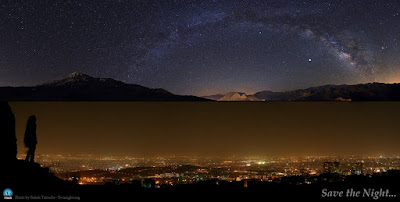Astronomers Observe Formation of Largest Bound Structures in the Universe
An international team of astronomers has mapped the density and temperature of X-ray-emitting gas in the outskirts of a distant galaxy cluster. The results, obtained with the orbiting Japanese X-ray telescope Suzaku, give the first complete X-ray view of a galaxy cluster, and provide insight into how such clusters come together. “These Suzaku observations are exciting because we can finally see how these structures, the largest bound objects in the universe, grow even more massive,” said Matt George, the study’s lead author at the University of California, Berkeley. The team trained Suzaku’s X-ray telescopes on the massive galaxy cluster PKS 0745-191, which lies 1.3 billion light-years away in the southern constellation Puppis. Between May 11 and 14, 2007, Suzaku acquired five images of the million-degree gas that permeates the cluster. The X-ray images of the cluster helped astronomers measure the temperature and density of the gas. These provide clues about the gas pressure and c...








